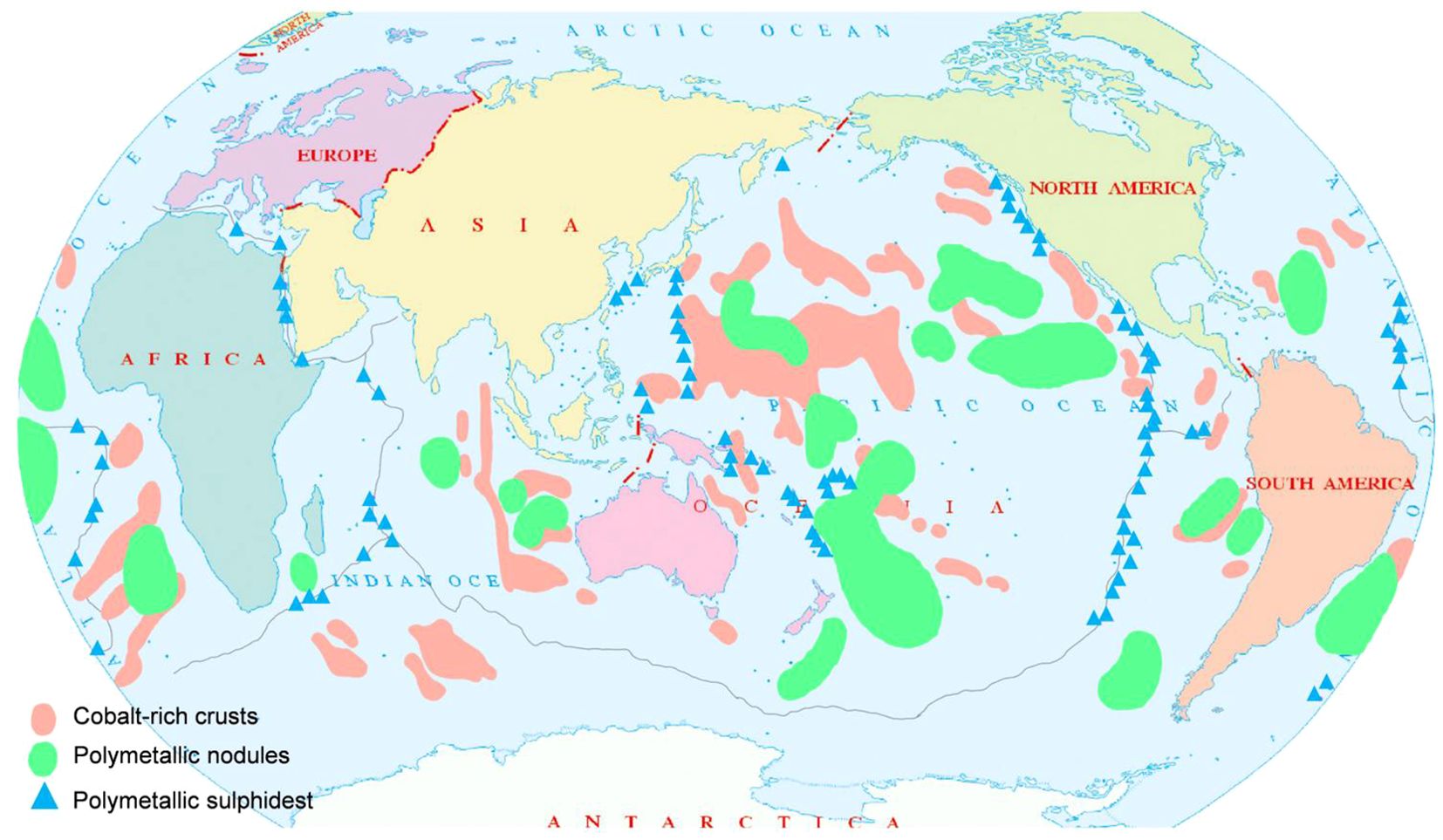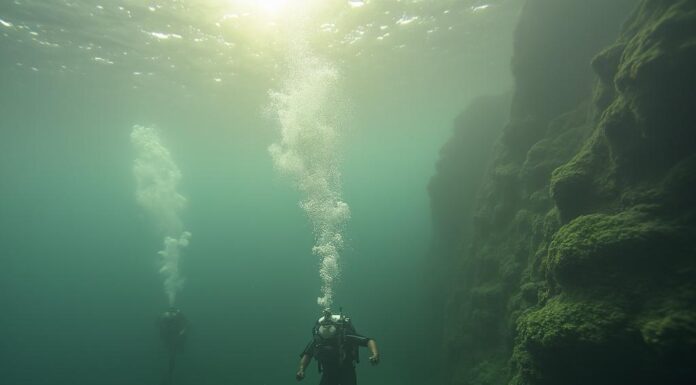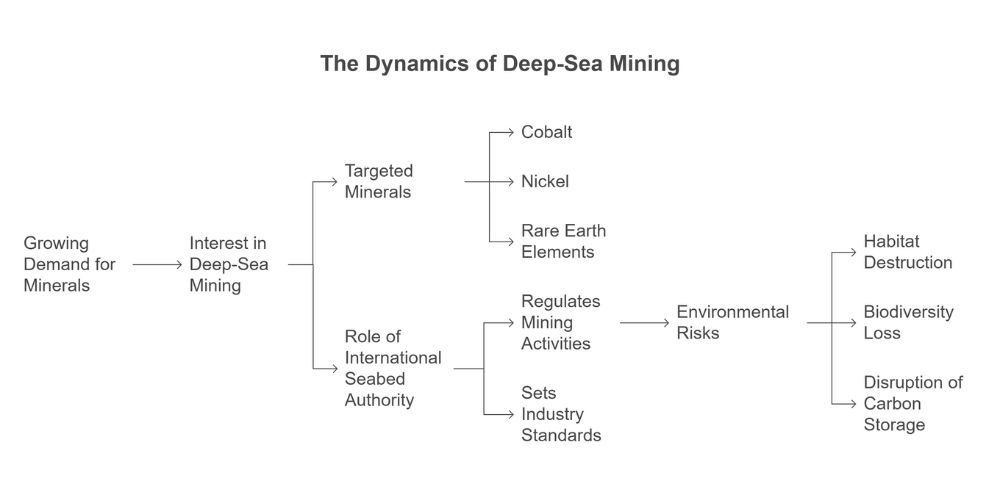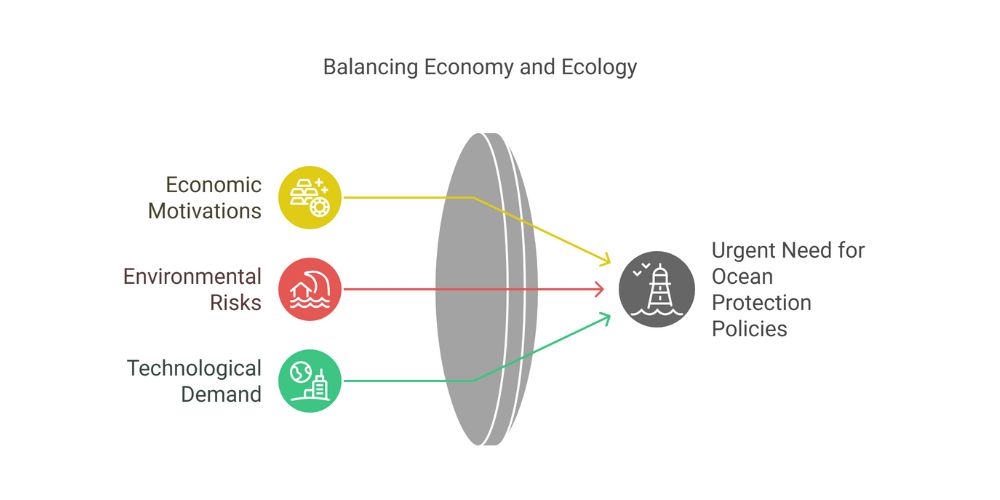Unraveling Environmental Impacts
Deep-sea mining at depths approaching 4,000 meters poses profound environmental issues, primarily due to sediment plumes that can devastate complex ecosystems largely unknown to science. Studies including those from Oceans Research and CSIRO underscore irreversible biodiversity losses and significant disruptions in carbon sequestration processes caused by sediment disturbances. A notable report by Yao et al., published in 2025, depicts vivid scenarios where benthic organisms face immediate mortality due to habitat destruction with long-term recovery being bleak.
Technological Advancements vs Ecological Preservation
While innovations spearheaded by organizations such as CSIRO have introduced advanced environmental monitoring tools capable of predicting seabed impacts with greater accuracy, complete mitigation of sediment plumes remains unresolved. Techniques to diminish plume size during mineral extraction are undergoing tests; however, no current technology can fully negate the resultant habitat disruption. Furthermore, emerging battery technologies promise reduced reliance on deep-sea extracted metals but are yet in nascent stages.
Navigating Governance and Regulatory Waters
The governance of deep-sea mining activities, overseen by the International Seabed Authority (ISA), faces critiques ranging from potential regulatory capture highlighted in discussions on X (formerly Twitter) to concerns regarding equitable benefit-sharing among nations. Furthermore, the ISA’s tight timeline pressing for regulation finalization could precipitate hurried approvals – an alarming prospect for environmental stewardship.
Economic Perspectives and Greenwashing Concerns
From an economic viewpoint, companies like The Metals Company have advocated deep-sea mining as a lesser evil compared to terrestrial extraction methods often marred by higher social impacts. However, allegations of greenwashing are rampant as companies position themselves within ESG frameworks without fully accounting for extensive lifecycle emissions linked to operations across oceanic depths.
Exploring Alternatives and Shifting Paradigms
Reforms in land-based mining operations and amplified efforts towards urban mining can potentially fulfill a substantial portion of our critical metal requirements. Advances in material sciences offering battery alternatives that use less cobalt and nickel also depict promising avenues reducing direct dependence on seabed minerals.
1. KEY FIGURES:
- Mining operations in the Clarion–Clipperton Zone (CCZ) are projected to extract 300–700 km² of polymetallic nodules and twice that amount in sediments per operation, causing direct faunal mortality over these areas (Source: Frontiers in Marine Science, 2025)[2].
- Demand for critical metals (nickel, lithium, cobalt, copper) for clean energy tech is expected to outstrip supply by 2030 under baseline deployment and recycling trends (Energy Transitions Commission, cited in Smithsonian Mag, 2025)[3].
- The deep sea accounts for over 90% of the biosphere and plays a vital role in carbon storage and climate regulation (WWF Arctic, 2025)[5].
2. RECENT NEWS:
- July 2025: CSIRO released a comprehensive environmental modeling suite for deep-sea mining in the CCZ, including a “traffic light” system to classify ecological harm and a full ecosystem model predicting localized seabed impacts but uncertain pelagic zone effects[4].
- April 2025: Oceans Research highlighted the irreversible biodiversity loss and sediment plume risks from deep-sea mining, emphasizing the unknown long-range effects of plumes on marine life and carbon cycles[1].
- July 2025: Smithsonian Magazine reported scientists raising alarms about potential oxygen production loss linked to nodule removal and the broader ecological disruption from sediment plumes threatening filter feeders like fish and whales[3].
3. STUDIES AND REPORTS:
- Yao et al., 2025 (Frontiers in Marine Science): Confirmed deep-sea mining causes immediate mortality to benthic organisms via crushing and habitat destruction; sediment plumes spread toxins and smother fauna; mining disturbs large seafloor areas causing long-term ecosystem damage[2].
- CSIRO, 2025: Developed ecosystem health indicators and risk-based frameworks for mining regulation; found some species groups in the CCZ may recover quickly, others may not; emphasized need for rigorous monitoring to avoid “serious harm”[4].
- Oceans Research, 2025: Detailed the irreversible loss of unique, endemic species and disruption of carbon sequestration through sediment disturbance and plume spread; highlighted lack of scientific consensus on plume dispersal and long-term ecological effects[1].
- WWF Arctic, 2025: Warned deep-sea mining exacerbates existing threats to deep-sea biodiversity and climate regulation, emphasizing unknown ecological risks due to limited scientific understanding and the deep ocean’s critical role in global well-being[5].

4. TECHNOLOGICAL DEVELOPMENTS:
- Advanced environmental monitoring tools developed by CSIRO use ecosystem models linking surface to seafloor zones to predict mining impacts and inform regulations[4].
- Emerging mining vehicles and extraction methods are being tested to reduce sediment plume size, but no technology currently eliminates plume generation or habitat destruction[1][2].


- Proposals for midwater discharge management and sediment plume containment remain in experimental stages with uncertain effectiveness[1].
 Innovations in battery chemistries with lower critical metal intensity and enhanced urban mining (recycling) are being explored as alternatives to deep-sea mining[3].
Innovations in battery chemistries with lower critical metal intensity and enhanced urban mining (recycling) are being explored as alternatives to deep-sea mining[3].
5. MAIN SOURCES:
- https://www.oceans-research.com/deep-sea-mining-threats-alternatives/ — In-depth overview of environmental risks and alternatives to deep-sea mining.
- https://www.frontiersin.org/journals/marine-science/articles/10.3389/fmars.2025.1598584/full — Peer-reviewed study on environmental impacts of deep-sea mining sediment disturbance.
- https://www.smithsonianmag.com/science-nature/as-interest-in-deep-sea-mining-grows-scientists-raise-alarms-about-the-possible-ecological-consequences-180987009/ — Reporting on ecological concerns and industry claims about deep-sea mining.
- https://www.csiro.au/en/news/all/articles/2025/july/science-helps-deep-sea-mining-decision-makers-assess-environmental-risks-and-viability — CSIRO’s comprehensive environmental risk assessments and monitoring frameworks.
- https://www.arcticwwf.org/threats/deep-sea-mining/ — WWF Arctic’s perspective on ecological risks and the ocean’s critical role in climate and biodiversity.
—
Summary: Deep-sea mining at depths of ~4,000 meters poses serious, often irreversible ecological risks including habitat destruction, biodiversity loss, sediment plumes spreading toxins, and potential disruption of carbon sequestration. While proponents argue these metals are essential for green technologies, the full environmental costs—borne largely by deep-sea ecosystems—are not yet fully understood. Emerging science calls for precautionary governance, rigorous monitoring, and consideration of alternatives such as improved recycling, urban mining, and demand reduction to avoid substituting one environmental crisis for another.
Other references:
oceans-research.com – Deep-Sea Mining: Risks, Impact, and Alternatives
frontiersin.org – Development of deep-sea mining and its environmental …
smithsonianmag.com – As Interest in Deep-Sea Mining Grows, Scientists Raise …
csiro.au – Setting the standard: Science helps deep-sea mining …
arcticwwf.org – Deep sea mining
wri.org – Source
en.wikipedia.org – Source
interactive.carbonbrief.org – Source
jpi-oceans.eu – Source
news.mongabay.com – Source
iucn.nl – Source
lse.ac.uk – Source
interestingengineering.com – Source
nature.com – Source
wglt.org – Source
npr.org – Source
tandfonline.com – Source
insideclimatenews.org – Source
sciencedaily.com – Source





 Innovations in battery chemistries with lower critical metal intensity and enhanced urban mining (recycling) are being explored as alternatives to deep-sea mining[3].
Innovations in battery chemistries with lower critical metal intensity and enhanced urban mining (recycling) are being explored as alternatives to deep-sea mining[3].